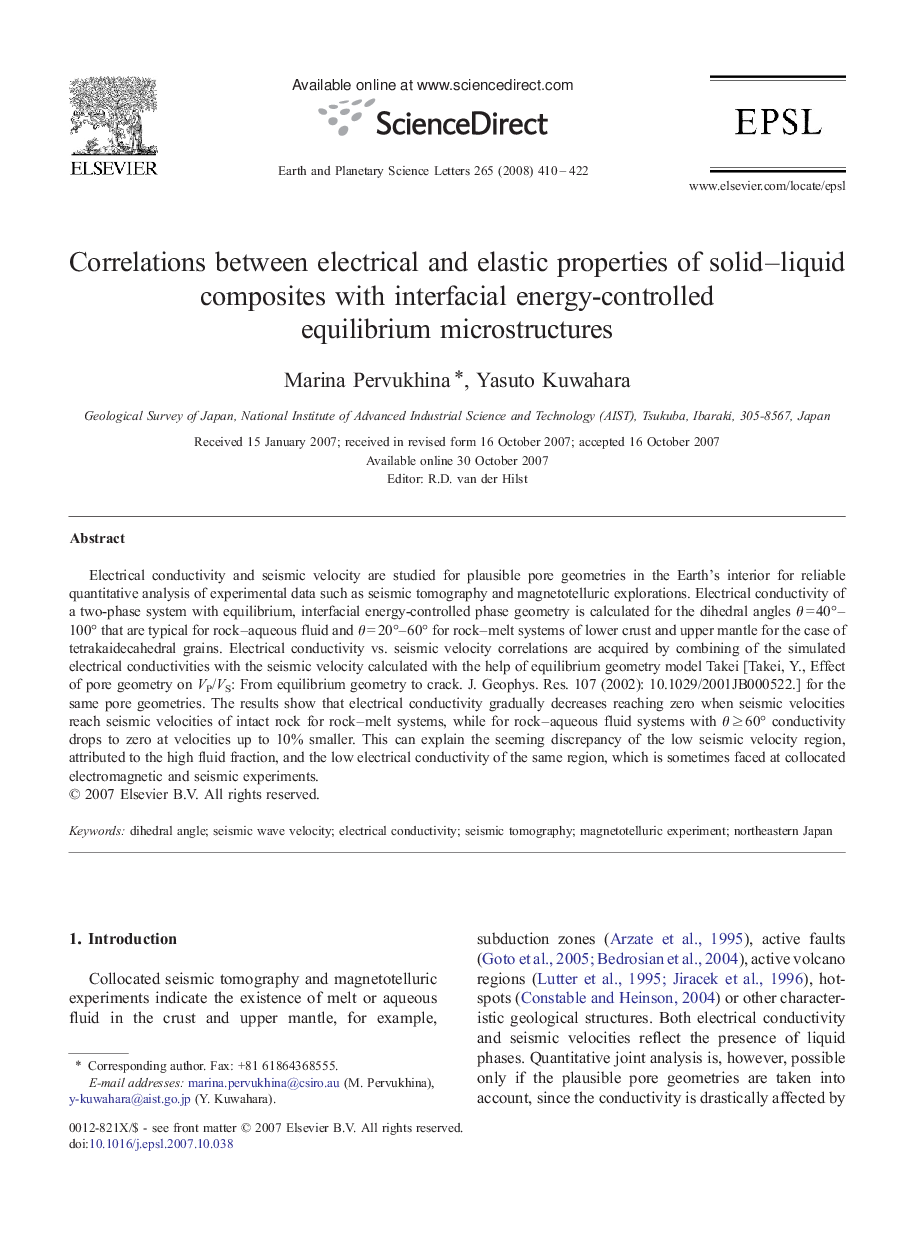| Article ID | Journal | Published Year | Pages | File Type |
|---|---|---|---|---|
| 4680042 | Earth and Planetary Science Letters | 2008 | 13 Pages |
Electrical conductivity and seismic velocity are studied for plausible pore geometries in the Earth's interior for reliable quantitative analysis of experimental data such as seismic tomography and magnetotelluric explorations. Electrical conductivity of a two-phase system with equilibrium, interfacial energy-controlled phase geometry is calculated for the dihedral angles θ = 40°–100° that are typical for rock–aqueous fluid and θ = 20°–60° for rock–melt systems of lower crust and upper mantle for the case of tetrakaidecahedral grains. Electrical conductivity vs. seismic velocity correlations are acquired by combining of the simulated electrical conductivities with the seismic velocity calculated with the help of equilibrium geometry model Takei [Takei, Y., Effect of pore geometry on VP/VS: From equilibrium geometry to crack. J. Geophys. Res. 107 (2002): 10.1029/2001JB000522.] for the same pore geometries. The results show that electrical conductivity gradually decreases reaching zero when seismic velocities reach seismic velocities of intact rock for rock–melt systems, while for rock–aqueous fluid systems with θ ≥ 60° conductivity drops to zero at velocities up to 10% smaller. This can explain the seeming discrepancy of the low seismic velocity region, attributed to the high fluid fraction, and the low electrical conductivity of the same region, which is sometimes faced at collocated electromagnetic and seismic experiments.
